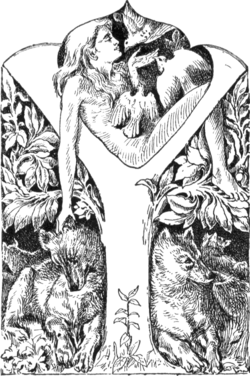This article needs additional citations for verification .(October 2019) |

Feral children, children who have lived from a young age without human contact, appear in mythological and fictional works, usually raised by animals. Often their dual heritage is a benefit to them, protecting them from the corrupting influence of human society, such as in Tarzan's case. It may also permit the development and expression of their own animal nature, for example Enkidu, or providing access to the wisdom and lore by which animals survive in the wild, for example Mowgli.
Contents
- In mythology, folklore, and ancient literature
- In modern prose
- In comics
- In film
- In television
- In games
- Miscellaneous
- See also
- References
- Notes
- Further reading
In most tales, the child is lost or abandoned. They are then found and adopted in a chance encounter with a sympathetic wild animal. In some stories, the child chooses to abandon human society [Note 1] or refuses to enter society altogether. [Note 2] The child usually returns to civilization, but may decide to return again to life in the wild. [Note 3] In some cases, they find themselves trapped between worlds, unable to enter entirely into either human society or animal society. [Note 4] [1]